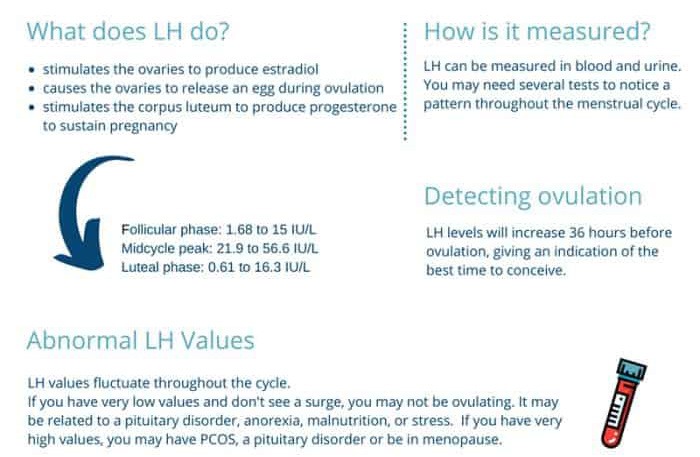13Dec
Understanding Luteinising Hormone (LH)
 Luteinizing hormone (LH) is produced and released in the anterior pituitary gland. This hormone is considered a gonadotrophic hormone because of its role in controlling the female and male reproductive system.
Luteinizing hormone (LH) is produced and released in the anterior pituitary gland. This hormone is considered a gonadotrophic hormone because of its role in controlling the female and male reproductive system.
WHAT DOES LUTEINISING HORMONE (LH) DO?
LH has several functions regulating the reproductive cycle:
– Stimulates the ovaries to produce estradiol
– Causes the ovaries to release an egg during ovulation
– Stimulates the corpus luteum to produce progesterone to sustain pregnancy
HOW IS LUTEINISING HORMONE (LH) MEASURED?
Luteinising Hormone (LH) can be measured in blood as requested by your doctor. It can also be measured in urine, using ‘ovulation tests’ which you can buy over the counter without a prescription.
You may need several tests to notice a pattern throughout the menstrual cycle. You may notice fluctuations and a surge, which happens just before ovulation. Normal LH values are:
- Follicular phase: 1.68 to 15 IU/L
- Midcycle peak: 21.9 to 56.6 IU/L
- Luteal phase: 0.61 to 16.3 IU/L
DETECTING OVULATION WITH LUTEINISING HORMONE (LH)
You can measure LH levels to detect ovulation. Levels will increase 36 hours before the egg is released from the ovary, giving an indication of the best time to conceive. Your fertile window includes the 5 days before ovulation and the day of ovulation.
ABNORMAL LUTEINISING HORMONE (LH) VALUES
It is normal for LH values to fluctuate throughout the cycle.
If you have very low values and don’t see a midcycle surge, you may not be ovulating. It may be related to a pituitary disorder, anorexia, malnutrition, or stress. If you have very high values, you may have PCOS, a pituitary disorder or be in menopause.
If you are concerned about your Luteinising Hormone (LH) values, contact us.